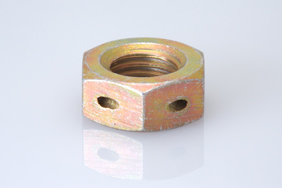Ensuring the flawless installation of press fit studs involves a meticulous approach, focusing on precision and adherence to guidelines. The process requires detailed attention to material selection, sizing, and installation techniques. This guide will lead you through the necessary steps, providing tips to achieve a secure and efficient installation.
Material Selection
Stainless Steel: The Prime Choice
When selecting materials for press fit studs, stainless steel often stands out due to its corrosion resistance, durability, and strength. Specifically, M8 304 stainless steel studs offer an excellent balance of strength and workability. This grade ensures a lifespan that significantly surpasses that of non-stainless materials, making it a cost-effective choice in the long term.
- Durability: Stainless steel provides a high level of durability against physical and environmental stress.
- Corrosion Resistance: Essential for applications exposed to harsh environments.
- Cost-Effectiveness: While the initial price might be higher, the extended lifespan and minimal maintenance requirements make it a value-driven choice.
Installation Precision
Tools and Techniques
Proper tools are crucial for the accurate installation of press fit studs. Using a dedicated press tool ensures that the force applies evenly across the stud, preventing material damage and ensuring a secure fit.
- Press Tool Requirement: Use a hydraulic or mechanical press tool designed for stud installation.
- Speed Control: A slow, controlled press speed avoids material deformation and ensures alignment.
Sizing and Specifications
Accurate sizing is critical for press fit stud installation. The hole diameter must slightly undercut the stud diameter to create the necessary friction fit.
- Stud Diameter: M8 (8mm)
- Hole Diameter: Typically ranges from 7.8mm to 7.9mm, depending on material hardness and application.
- Installation Force: Requires an estimated force of 5000N to achieve a secure fit, highlighting the importance of a robust press tool.

Efficiency and Cost
Balancing Quality and Budget
Efficient installation does not only focus on the speed but also on minimizing waste and ensuring long-term reliability. Selecting high-quality studs like the M8 304 stainless steel models balances initial costs against the benefits of reduced maintenance and longer service life.
- Initial Cost: Higher for quality materials, but justified by durability and performance.
- Installation Efficiency: Proper tools and techniques reduce installation time and potential for error.
- Maintenance Savings: Durable materials and precise installation minimize future repair costs.
Conclusion
Achieving a flawless installation of press fit studs hinges on careful preparation and attention to detail. From selecting the appropriate materials like M8 304 stainless steel to employing precise tools and techniques, each step plays a crucial role in ensuring a secure, efficient, and cost-effective installation. Remember, the goal is not only to meet the immediate requirements but also to ensure longevity and reliability, offering significant value over time.
